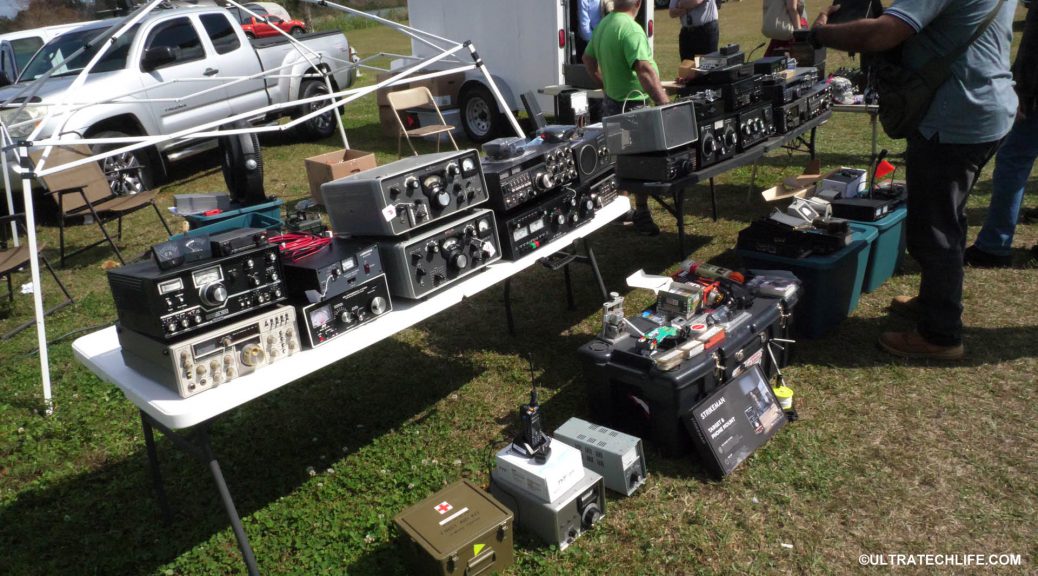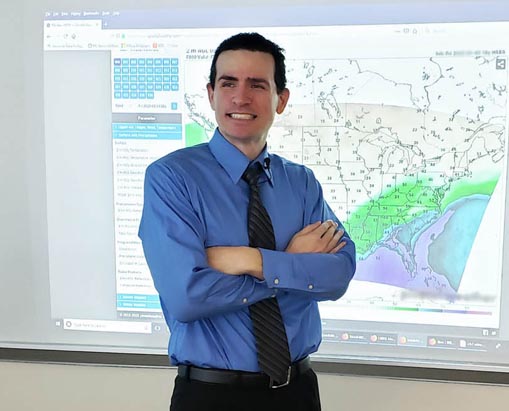Ham radio history & future - HamCation 2024

HamCation 2024 was a look back at ham radio’s history and a preview of its future. This is the second-largest hamfest in the United States. HamCation is a trade show that features new amateur radio equipment vendors and used swap-style areas where you can find lots of cool tech devices. From antique boat anchors to modern digital satellite gear, you can find a little bit of everything. And this year, the weather was perfect for the event. Take a look as we share highlights of HamCation 2024 and some unique thoughts on ham radio over the decades.
HamCation
Each year, thousands of amateur radio operators and tech enthusiasts gather at the Central Florida Fairgrounds and Expo Park in Orlando, Florida on February 9-11. The second largest hamfest in the US is popular because of its location in warm, sunny Florida, close to the beach and theme parks. People from all over the world come to this event to see the older used radio equipment, buy hard-to-find parts, and get their hands on the latest high-tech ham radio gear.
A Museum
Walking around HamCation is cool because you can see decades of radio technology. It’s not just radios, people sell all kinds of related antiques. Need an old knob for a console TV set? You might find it at HamCation. Need old tubes? How about amplifiers or older Healthkit models? There are radios from the 1940s, 1950s, and even really cool analog base station scanner radios from the 1980s and 1990s. You can walk around and see how technology has changed over the decades. There are also commercial radio devices (new and used) available to buy.
As a kid, my first interest in ham radio actually came from my interest in severe weather back in Kansas. I had attended numerous Skywarn presentations and had a big interest in meteorology. I quickly became a volunteer and got my ham radio license. Being a storm spotter, I quickly got interested in the technological aspects of storm spotting and storm chasing.
My interest in science continued to grow. Being the first one on the scene after a tornado got me into emergency medical science school as well. There is a community, if you find the right people, you join a club, and they use ham radios to communicate. This might be for storm spotting (a public service) – as I did. Other opportunities include volunteering at camps, outdoor runs/bike rides, and things like Red Cross food trucks. Sometimes ham radio is just about experimenting, building a radio or an antenna, and seeing who you can talk to. That’s pretty cool, too.
Ham Radio Trends
In the 1990s, you could buy a single VHF/UHF scanner radio and have so much information at your fingertips. Analog radio systems were the norm for police, fire, EMS, emergency management, and you can even hear cordless phone and baby monitor activity. The typical scanner enthusiast could hear everything going on in their community. However, by the late 1990s, newer technology began to expand into much of the public service realm. This meant trunking systems replacing analog, newer encryption technologies, and network-based emergency communications were on the rise. A typical dual band ham radio could pickup the old analog systems but could not hear the newer digital public service systems. Similarly, an analog VHF/UHF scanner could no longer receive much of the radio services it previously could.
By the early 2000s, trunking and encryption rendered lots of the previous scanner radio equipment and wide receive capabilities of ham radios less useful. Analog scanners are popping up all over hamfests, a reminder of the iconic scanner enthusiast days are a thing of the past.
More software and network-based systems continue to appear in ham radio. Rather than just single-point radio stations, network connections enable ham radio operators from all over the world to connect to multiple types of nodes, communicating more information than ever before. Besides being a hobby, amateur radio still serves various volunteer-use purposes, such as county emergency management organizations and Skywarn storm spotter groups.
ULTRATechLife spoke with Ray Novak of Icom America regarding the latest ham radio trends. Amateur radio is experiencing a shift towards more digital modes, touch screens, and software interfaces. There are more communication modes than ever before, which gives the typical radio operator more opportunities to connect to others. Despite the popularity of digital modes, Novak says emergency communications may always fall back to the “least common denominator”, keeping it simple with analog. The digital mode devices can be linked to older systems. But keeping it simple is important in an emergency.
Amateur Radio
Have you heard of ham radio? The Federal Communications Commission calls it “amateur radio service” because it’s an official set-aside frequency spectrum (29 frequency bands) that the government allows licensed operators of any age to communicate on to promote self-training, intercommunication, and technical investigation. There are millions of amateur radio operators all over the world. The hobby is awesome, involving lots of opportunities to experiment, join clubs, emergency radio services, volunteer opportunities, and operate analog, digital, pulse, and spread-spectrum emissions. What’s also cool? Ham radio operators can talk around the world without paying for smartphone plans or internet service. What else? Ham radio operators can also talk to the space station!
More about author.
